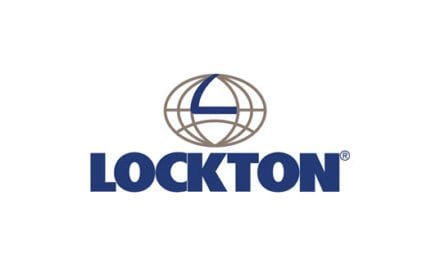By Joe Kratochvil, Clear Stone Solutions
I recently participated in a series of industry-based, strategic planning work sessions, focusing on the needs of downstream petroleum marketers. The business leaders involved were intelligent and market savvy with years of experience guiding high velocity, margin driven enterprises. This group represented some of the most successful business drivers in the downstream petroleum space, and they were struggling.
Their concerns were not centered on product supply, market awareness, or the value proposition of organic versus acquisition growth strategies. Their anxieties revolved around the ability to interpret the impact of market variables on their business and translate those variables into market share growth and margin capture. The data they were relying upon to power their decisions today was typically days old and often contested between their internal business unit leaders.
It was apparent their ability to utilize the core strengths of the business to capitalize on market advantages was compromised. This situation was aptly described as driving 70mph down the highway with the radio stuck at max volume and no headlights. What they needed was near real-time data mined from the various lines of business systems operating within their enterprise, presenting a single source of truth that could be called upon to bring visibility, transparency and awareness to the metrics used to manage the business. In short, they needed headlights and a mute button.
Volatile markets and competitive consolidation throughout the industry are necessitating contextually relevant business intelligence capabilities to enable agile decision-making. Over the last few years there has been a growing trend towards the development of key performance indicators and efficiency metrics spawned out of highly customized spreadsheets to analyze data and replace emotionally based “gut decisions.” These spreadsheets are utilized to obtain data, and often span multiple lines of business systems, spread across various acquisitions and geographies. They typically represent the only organizationally “trusted,” functional view into day-to-day activities of the business. They are laborious and time consuming with a disturbingly high margin of error and provide a disjointed and contested set of results creating as much noise and confusion as business visibility.
The development of an organizationally agreed upon single source of truth is the path out of the maze. Building a centralized repository (SQL data warehouse/cube) to pull data from the various systems/platforms that comprise the core line of business software portfolio, harnesses the power of an enterprise class database and allows for the presentation of meaningful KPI’s via intranet dashboards. By incorporating the analysis and conversion of the user input driven spreadsheets into automated reports, business unit leaders get the data they are used to seeing, with the added comfort of knowing the numbers are gleaned from trusted sources.
This solution substantially reduces the human touch factor, delivers visibility and crucial business intelligence to the enterprise and empowers informed decision making from anywhere.
These transformative projects do not happen overnight, and planning is key. There are multiple considerations and challenges to evaluate, and it will require the executive teams to engage with IT to understand the current state (and its limitations) in order to plan what capabilities they want for the future. The steps to success generally include the following developmental phases:
- Current state review, which should answer these questions:
- What systems are currently in play. This should include a software portfolio analysis. Can we simplify through software consolidation?
- A business process review
Determining which platforms are responsible for enabling specific business cases is an essential exercise. This preliminary step sets the stage for future project planning, and enables a comprehensive, holistic approach to a best practice based process review.
- Corporate Strategic Initiatives review: Most technically focused business leaders understand the need for updated, current technology platforms in their businesses. However, it can be seen as a challenge to get organizational buy-in for expensive projects. By creating an internal synergy between the technical needs of the business and the strategic initiatives for the enterprise, you create opportunities to achieve technical innovation via corporate growth. In other words, you are building business cases to enable the growth initiatives of the enterprise and are powering it through upgraded technology solutions platforms.
- Industry best practices review: One of the ongoing challenges, high velocity companies face is utilizing the full feature set of their technology platforms. Typically these platforms are the result of corporate acquisitions, or focused business leaders looking for tools to enable their teams. This environment lends itself to fractionalized, silo’ed information that is difficult for the organization to integrate into the decision-making efforts of the leadership team.
- Business requirements planning: This is a critical waypoint in the journey towards a single source of truth for every organization. Creating an agreed upon requirements document that details the needs of the various business units of the enterprise is beneficial for a host of reasons. Perhaps the most important of those is organizational benefit gained through visibility and alignment behind what it takes to enable and grow the business. Additionally, this provides the technical leaders visibility into specific business needs and adds business focus to their day-to-day technical roles.
- Project scope development: Defining project scope documentation creates the ability for business leaders to manage expectations. A well-developed project scope has obvious benefits, (budget governance, deliverables definition, stakeholder alignment, etc.) but at its core, a scope provides a scorecard for success. Did we meet the objectives we set out to accomplish at the start of the project? What are the headline indicators that are crucial to enable leadership to drive the business?
- Vendor engagement: Entering into vendor discussions and soliciting their input for this type of project is critical to ensure project success. Working with vendors to understanding the inherent feature sets, best practices, integrations capabilities and willingness to extend offerings of the various platforms deployed is vital. The concept of vendor engagement not only encompasses sourcing solutions for the needs of the business, but creating partner relationships with the trusted groups tasked with enabling the business for future growth. These vendor relationships allow the cross pollination of best practices across their client base, and are a valuable knowledgebase of industry awareness.
- Project implementation/adoption: Project implementation is the last step of a solid project plan and is the engine powering the Technology road map for the organization. The alignment established during the requirements phase of the project enables cross-functional confidence in the implementation and adoption of the decisioning platform. This unified presentation of a corporately accepted, single source of truth encompasses the corporate requirements and enables real performance management for the enterprise.
The good news is many organizations have great people doing a wonderful (albeit painfully manual) job of running their business segments through individual analysis. These complex spreadsheets represent the right thinking, but the wrong tools. As business leaders we need to understand these constraints and enable our teams with scalable BI solutions, purpose built to drive the business.
After our work sessions, I am confident the majority of attendees went back to their respective organizations and began asking questions. Hopefully, these questions will lead to internal discovery/ planning sessions that will become the springboard for successful business intelligence development projects. Changing the way an organization does business is difficult. The groups that understand the need for an agile business-decisioning platform powered through unified data analysis will be positioned to be tomorrow’s industry leaders. I am excited to hear their success stories next year.
 Joe Kratochvil is the Founder and Chief Executive Officer of Clear Stone Solutions. He rejoined the Clear Stone team after a two-year hiatus, during which time he accepted the position of President of JPM Resources, after having served as the Director of DELTA (a strategically focused resources team) for Atlas Oil. Before founding Clear Stone Solutions in 2011, he was Heritage Petroleum’s Director of Information Technology. He was responsible for development of the technical vision for the company, in addition to various strategic responsibilities across the organization. During his tenure he developed technology and processes to enable corporate growth in the areas of pricing, logistics, and inventory management providing scalable growth for the organization. web: www.clearstonesolutions.net tel: 812.319.5762 email: [email protected]
Joe Kratochvil is the Founder and Chief Executive Officer of Clear Stone Solutions. He rejoined the Clear Stone team after a two-year hiatus, during which time he accepted the position of President of JPM Resources, after having served as the Director of DELTA (a strategically focused resources team) for Atlas Oil. Before founding Clear Stone Solutions in 2011, he was Heritage Petroleum’s Director of Information Technology. He was responsible for development of the technical vision for the company, in addition to various strategic responsibilities across the organization. During his tenure he developed technology and processes to enable corporate growth in the areas of pricing, logistics, and inventory management providing scalable growth for the organization. web: www.clearstonesolutions.net tel: 812.319.5762 email: [email protected]








